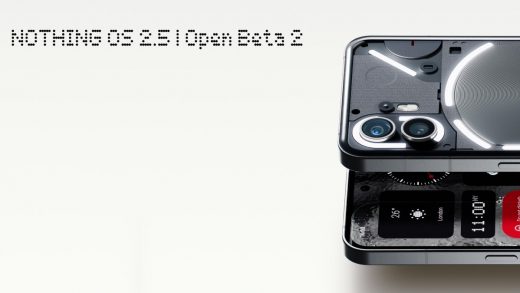
Samsung has been enjoying its foldable supremacy and quietly building its loyal customer base in the ultra-premium smartphone segment in India for the past four years, since it hasn’t really had much competition, till now. Motorola did try its hand with the Razr series by launching the Razr (2019) and Razr 5G (in 2021) models in India, but with seemingly lesser success.
Chinese smartphone brands have only now begun warming up to the idea of launching foldables in other markets outside China, however, they are approaching it with a lot of caution. For example, Oppo has only launched its smaller clamshell foldable called the Find N2 Flip in the country and not the Find N2. Motorola is all set to launch the Razr 40, and a more premium clamshell foldable called the Razr 40 Ultra in the following weeks in India. Looking at the larger, horizontal folding devices, Tecno launched the Phantom V Fold this year at an extremely competitive price. Meanwhile, Google’s recently announced Pixel Fold has also been restricted to select markets only, excluding India.
It seems like the competition is finally (albeit gradually) closing in on Samsung, but the company has a solid four-year lead in the foldable space so it should be feeling confident with its next launch which is right around the corner. Samsung has officially confirmed that its next Galaxy Unpacked event will take place sometime in late July in Seoul, South Korea, and that it will be announcing its next foldables. Samsung hasn’t named them yet officially, but they’ll most likely be the Galaxy Z Flip 5 and the Galaxy Z Fold 5.
We have reviewed several foldable devices from Samsung in the past, and I have been using the company’s Fold and Flip phones interchangeably for a while. We already have a tonne of rumours and leaks about what we can expect from the new models, but here are some specific things which I would like to see from the company’s next foldables.
A larger display on the next Galaxy Fold
I have been using the Samsung Galaxy Z Fold 3 on and off for the past year. I really like its form factor which is better suited for viewing content when viewed horizontally, but I would love to see an even bigger display in a similar format. However, doing that would require changing the outer display’s aspect ratio to something that’s a lot wider because the current phone is already quite tall.
Vivo’s X Fold 2 has a wider, yet taller 6.53-inch 21:9 aspect ratio for its external display and that makes way for a massive 8.03-inch inner display in a mostly rectangular format (when held horizontally), which is closer to a tablet. This also makes its outer display easier to use compared to the Galaxy Z Fold 4‘s 23.1:9 aspect ratio external display, which in itself was a major improvement over the Galaxy Z Fold 3’s skinny 25:9 aspect ratio that resembled a TV remote.
![]()
Samsung’s jump to a bigger external display on the Galaxy Z Fold 4 from the Galaxy Z Fold was not a big leap, but a welcomed move
A wider external display, in my opinion, reduces the need to access the inner display very frequently for smaller tasks. Meanwhile, a larger inner display easily justifies the shift from a regular phone (like the Galaxy S23 Ultra) to a more tablet-like format when watching movies or playing games. A wider form-factor should also make room for an S-Pen silo as well, but given that we have already seen leaked images and renders of the supposed Galaxy Z Fold 5, this seems like a lot to ask for at this point in time. We are hopeful though that Samsung will flip things around with the next Galaxy Z Fold 6.
Better-optimised software experience in the Flip
This mainly applies to the Galaxy Z Flip models. I reviewed the Galaxy Z Flip 4 last year, and I concluded that its tiny outer display was no more usable than a Wear OS-powered smartwatch. With daily usage, the outer display is mainly useful for checking who’s calling or glancing through messages. Its slightly shaky touch sensitivity also makes the whole experience fidgety enough to drop everything and just open the main display to get stuff done.
In contrast, Oppo’s N2 Flip with its bigger outer display (currently the biggest in India) does a better job dealing with notifications, but Motorola’s upcoming Razr 40 Ultra is expected to change the game, allowing full apps to be run on the outer display itself.
We have heard of rumours hinting that Samsung has been working with Google with its expected bigger cover display, which resembles a folder icon. However, it still isn’t clear whether these apps for the outer screen will be another set of widgets based on the full apps, or whether Samsung has indeed overhauled its outer display to run full-fledged apps. What I really want to see is a proper keyboard integration, so I can use swipe-gesture typing for replies without needing to open the phone.
![]()
Oppo’s bigger cover display turned out to be far more useful than the Galaxy Z Flip 4’s tiny external display, even at the software level
The Google Pixel Fold introduced some really practical features such as the ability to use Translate in dual-screen mode. Samsung’s current Flex mode (which is still a beta feature) either separates a single app between the two halves of the folding display (pushing a touchpad and other controls to the bottom half) or lets two apps run side-by-side like in split-screen mode.
Flex mode’s main objective is to take advantage of the folding form factor and keep the top half of the display upright thanks to its ingenious hinge. But given that the top half of either the Fold or the Flip isn’t sufficiently large for viewing content, I mainly ended up using this mode for video calls. It would be nice if Samsung made better use of both the inner and outer displays at once, save for its current use case in the camera app. A bigger inner display, as mentioned in the previous section, would also make better use of Flex mode, making the top half tall enough for viewing video.
More refined hinges
In our comparison of Oppo’s Find N2 Flip versus the Galaxy Z Flip 4, we concluded how well Oppo’s clamshell foldable hits the sweet spot when it comes to flipping it open or shut. Its hinge mechanism is designed in a way in which it can hold up one half of the device upright, beyond which, it will either open up flat or fold shut. The Galaxy Z Flip 4’s hinge is a bit too tight and rigid, making it harder to flip open with one hand. Even with two hands, there’s a noticeable amount of pressure required to open it.
![]()
Oppo’s Find N2 Flip (right) has a gapless fold compared to the Samsung’s Galaxy Z Flip 4 (left)
According to recent reports, Samsung has been working on a new hinge. So, here’s hoping that it makes it easier to operate the device, apart from reducing the inner display’s crease, which is also one of the deepest and most prominent ones we have seen compared to other similar foldables.
Better cameras
The Samsung Galaxy Z Fold 4 was a big upgrade over the Galaxy Z Fold 3 in terms of cameras and the same can be said about the Galaxy Z Flip 4, which currently has the best set of cameras on a clamshell foldable smartphone in India. Still, both phones lack the oomph of the Galaxy S23 Ultra or even the Galaxy S23 for that matter. It would be nice to see Samsung pull off even better image quality with newer sensors or smarter algorithms as this would help distance itself from the growing competition.
![]()
Samsung’s Galaxy Z Flip 4 currently has the best cameras on a clamshell foldable
However, better cameras need more space and on a foldable there’s a severe shortage of Z-axis depth as they are already quite thick to begin with when folded. The only solution would be to make them bigger in size, which would help spread out more components over a larger area. Google seems to have done a fine job with its Pixel Fold when it comes to cramming in camera hardware, managing even a 5X telephoto camera. It’s your turn, Samsung.
Faster charging and longer battery life
Samsung still doesn’t have a fast enough charging system for its premium devices, while the competition has sped ahead. For instance, the Galaxy S23 series still takes close to two hours to charge fully. The Galaxy Fold 4’s 4,400mAh battery takes over an hour to charge. I really think it’s time Samsung started taking fast wired charging a bit more seriously.
While I found the battery life on the smaller Galaxy Z Flip 4 to be sufficient, the same could also be said about the larger Galaxy Z Fold 4. With the camera and productivity-oriented (because S-Pen) Galaxy S23 Ultra easily managing over a day of battery life, I kind of expected the larger tablet-esque Galaxy Z Fold to perform a lot better, mainly because it’s being marketed as a productivity device which can run three apps at the same time. Having said that, the Galaxy Z Fold 4 did a lot better compared to the Galaxy Z Fold 3 in terms of battery life, so we can expect Samsung’s foldable expertise to help extend battery life even further with the next one.


